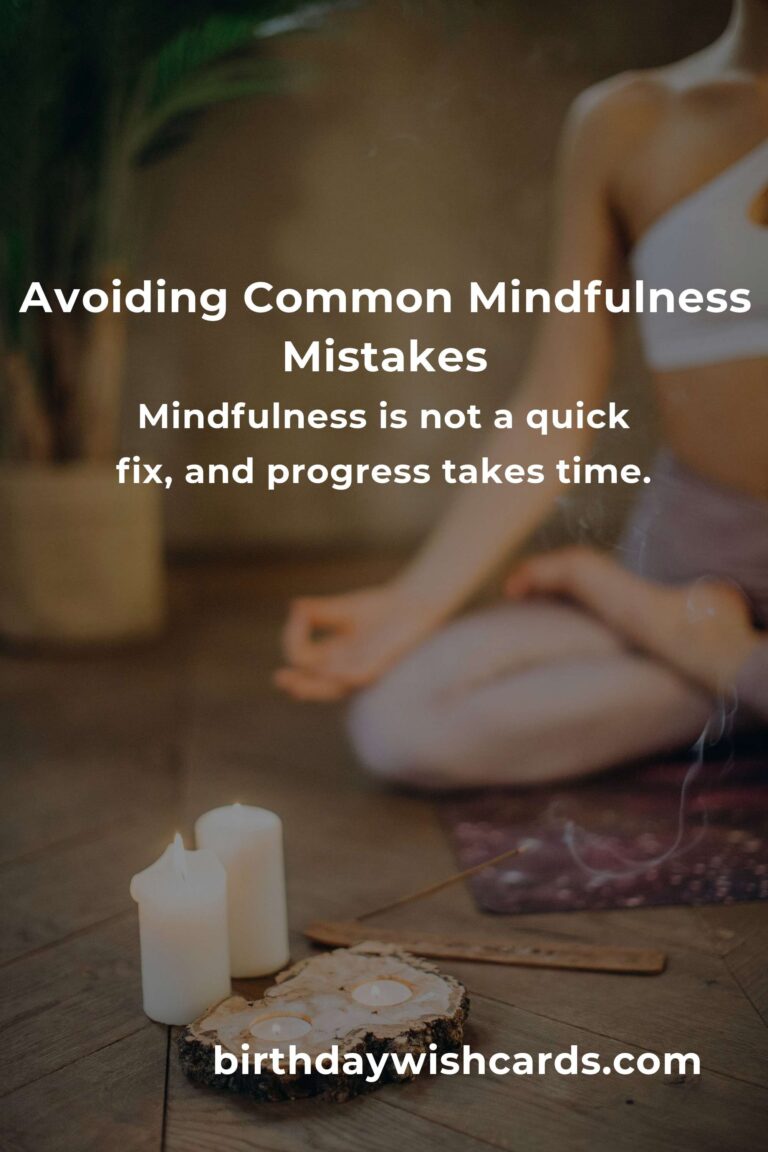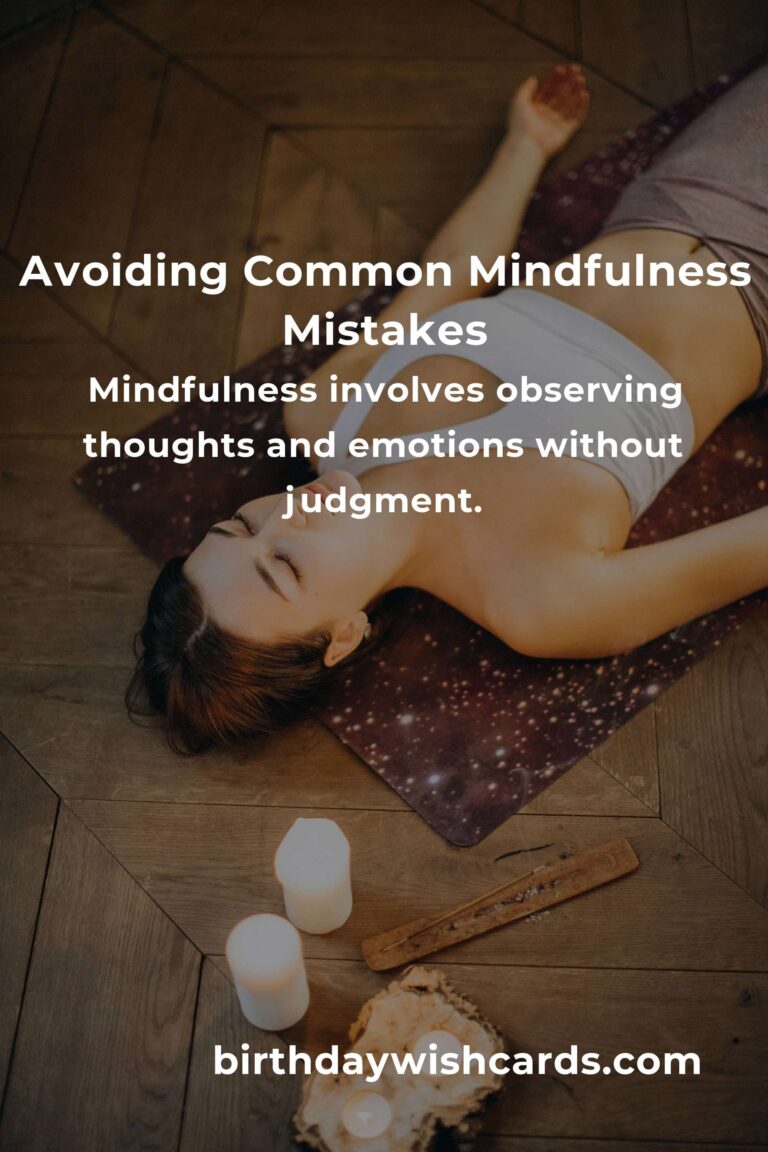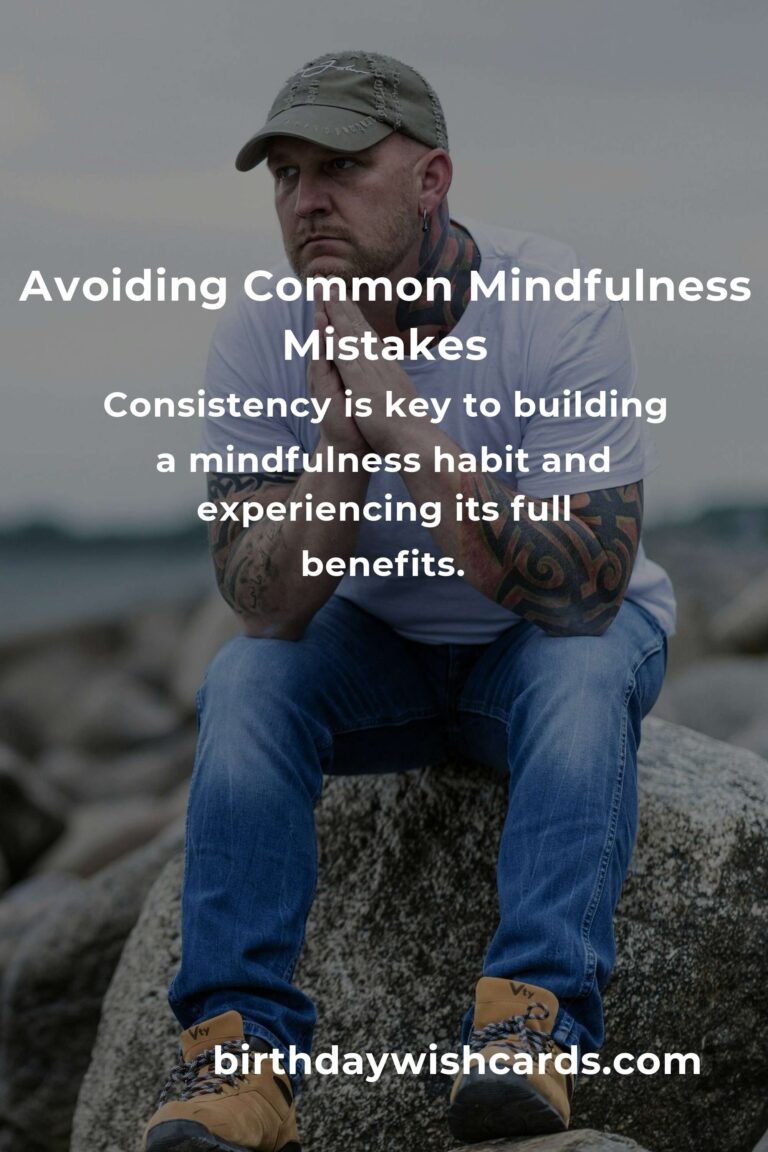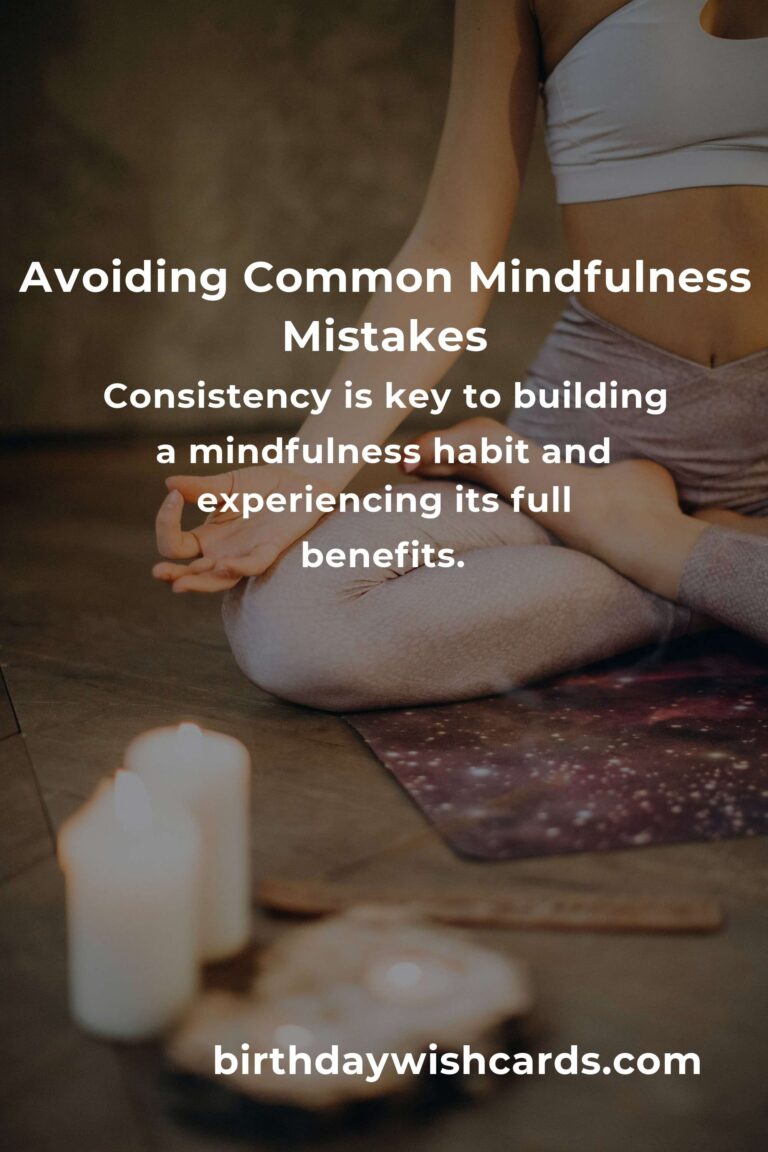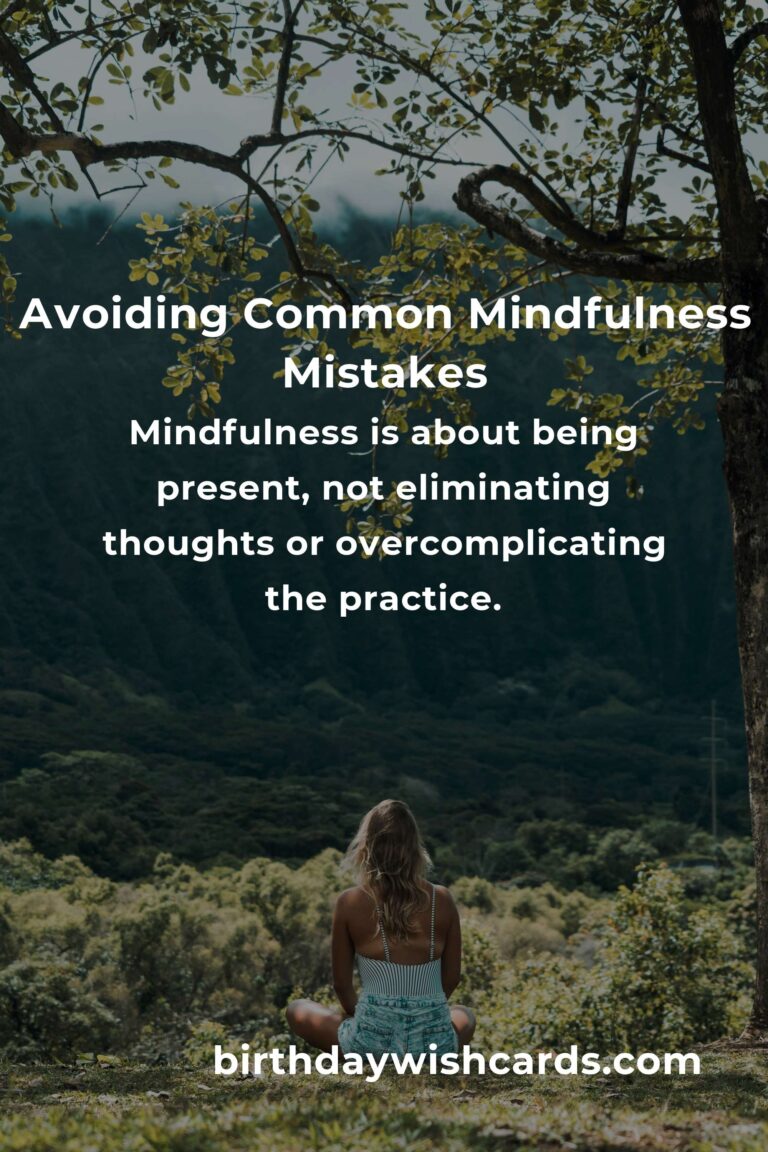
In today’s fast-paced world, mindfulness has become a popular way to reduce stress and improve overall well-being. However, as with any practice, there are common mistakes that individuals often make. Understanding these pitfalls can help ensure a more effective and rewarding mindfulness journey.
1. Setting Unrealistic Expectations
Many people approach mindfulness with the expectation that it will solve all their problems or lead to immediate enlightenment. While mindfulness can significantly enhance your life, it’s important to remember that it is not a quick fix. Progress takes time, and the journey is as important as the destination.
To avoid this mistake, set realistic goals for your mindfulness practice. Start small, perhaps with just five minutes a day, and gradually increase as you become more comfortable. Celebrate small victories and be patient with yourself.
2. Lack of Consistency
Like any skill, mindfulness requires regular practice. One of the most common mistakes is practicing mindfulness sporadically. Without consistency, it’s difficult to experience the full benefits.
Commit to a daily practice, even if it’s just for a short period. Consistency is key to building a habit. Consider setting a specific time each day dedicated to mindfulness, ensuring it becomes a natural part of your routine.
3. Being Judgmental
Mindfulness is about observing your thoughts and emotions without judgment. However, many people fall into the trap of criticizing themselves for having certain thoughts or feelings during mindfulness exercises.
Practice self-compassion and remind yourself that it’s natural to have thoughts. The goal is to acknowledge them and gently bring your focus back to the present moment without criticism.
4. Trying to Control Thoughts
Another common mistake is trying to control or suppress thoughts during mindfulness practice. Mindfulness is not about eliminating thoughts but rather acknowledging them and letting them pass.
Instead of trying to control your mind, allow your thoughts to flow naturally, and bring your attention back to your breath or chosen point of focus.
5. Ignoring Physical Discomfort
Many beginners assume that meditation requires sitting perfectly still, which can lead to discomfort. Ignoring physical signals can result in frustration or even injury.
Find a comfortable position that you can maintain without strain. It’s okay to adjust your posture during practice. Listen to your body and make necessary adjustments.
6. Neglecting the Present Moment
Mindfulness is fundamentally about being present. However, it’s easy to get caught up in ruminating about the past or worrying about the future during practice.
When you notice your mind wandering, gently redirect your focus to the present moment. You can use your breath, sounds, or bodily sensations as anchors to bring you back.
7. Overcomplicating the Practice
Some people believe that mindfulness requires complex techniques or rituals, which can be intimidating and discourage practice.
Keep it simple. Mindfulness can be practiced anywhere, at any time. Focus on being present and aware, without the need for elaborate procedures.
Conclusion
Mindfulness is a powerful tool for enhancing mental clarity and emotional well-being. By recognizing and avoiding these common mistakes, you can deepen your practice and experience greater peace and balance in your life. Remember, mindfulness is a journey, and every step you take is valuable.
Mindfulness is not a quick fix, and progress takes time. Consistency is key to building a mindfulness habit and experiencing its full benefits. Mindfulness involves observing thoughts and emotions without judgment. Mindfulness is about being present, not eliminating thoughts or overcomplicating the practice.
#Mindfulness #Wellbeing #MindfulLiving #Meditation #StressRelief


